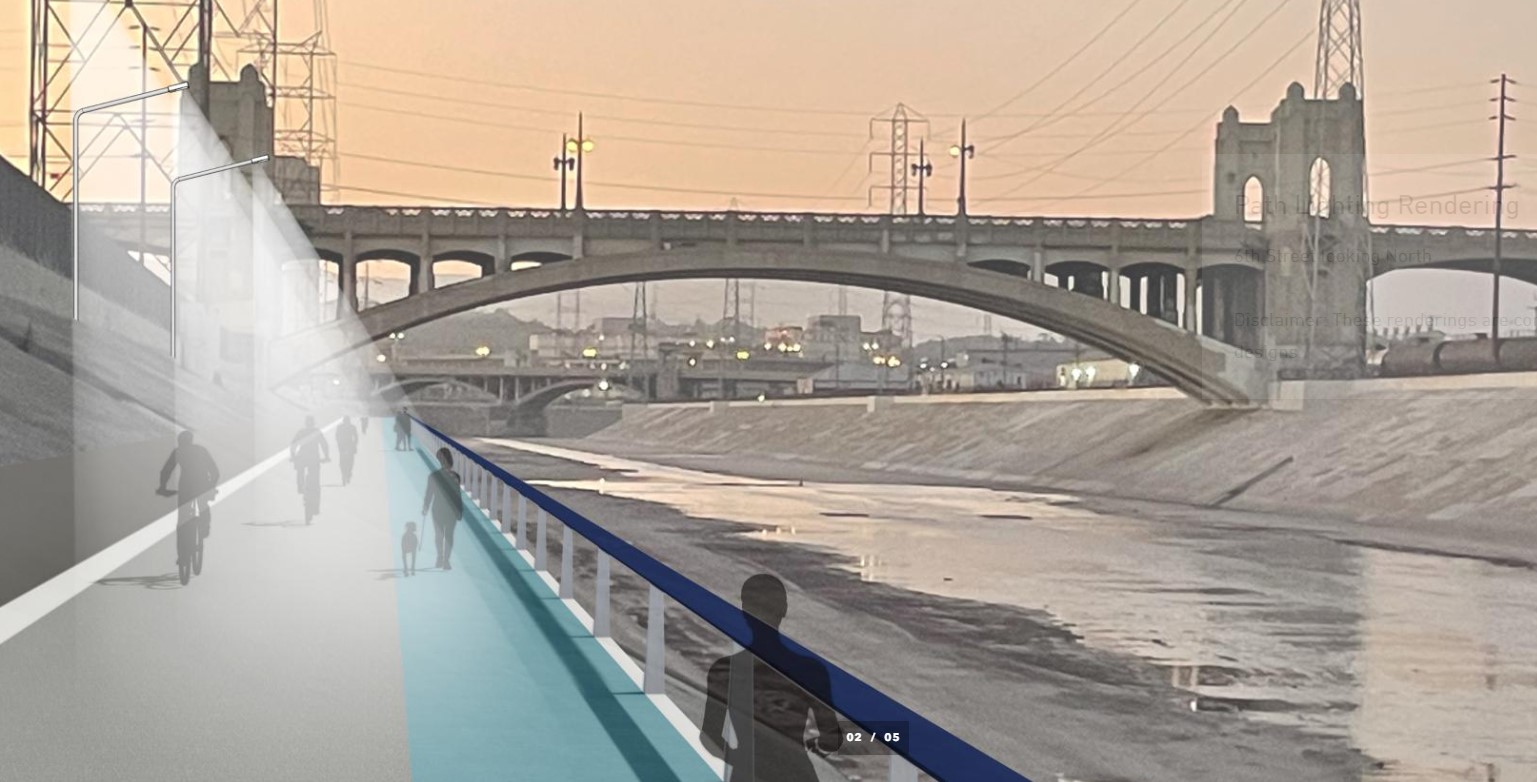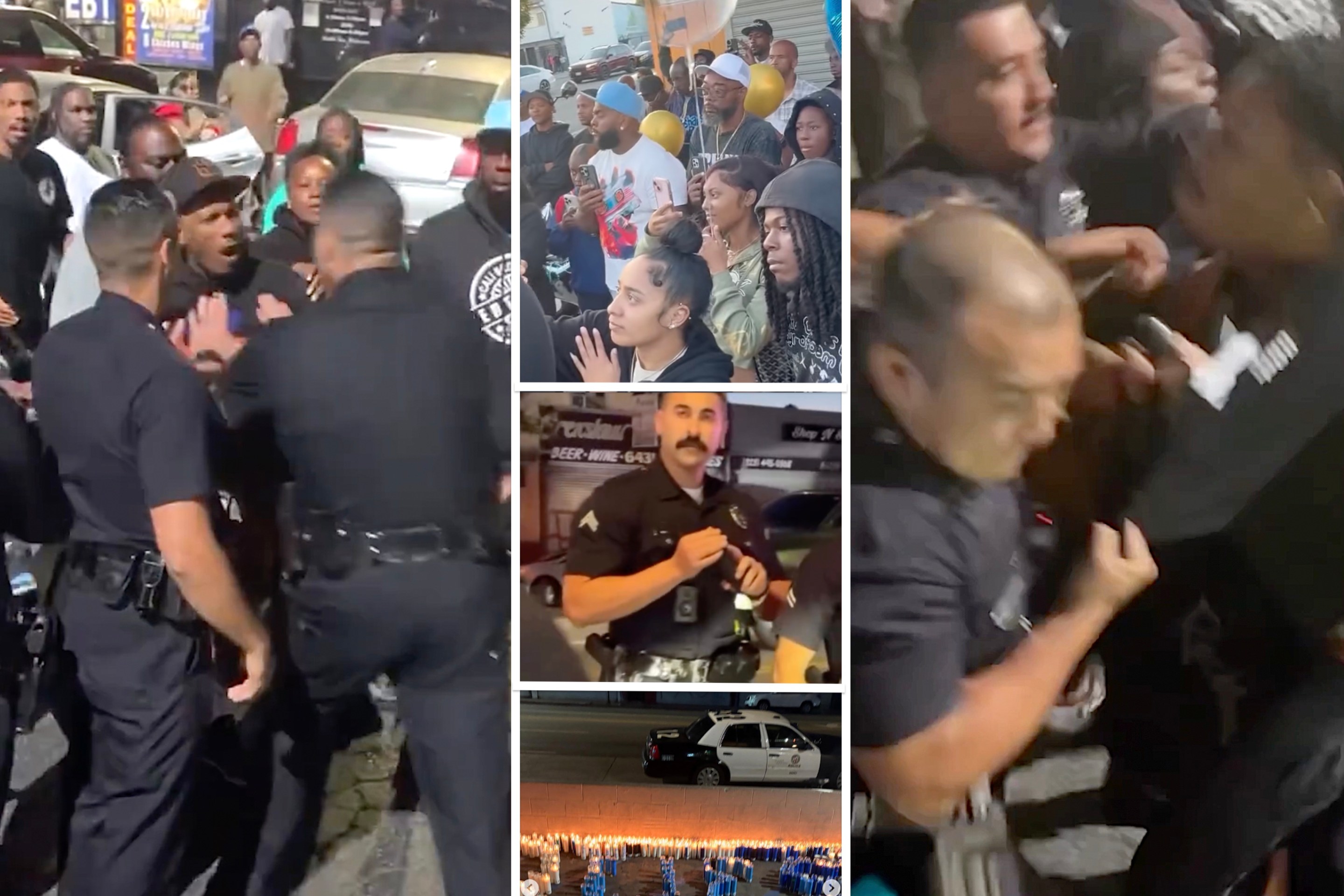 Cyclists wait in line to testify on Bike Plan.
Cyclists wait in line to testify on Bike Plan.By the time the bike portion of the "Bike-Only" City Council Transportation Committee hearing began at 3:45, one hour and forty-five minutes late, it was clear that the bicycling-love-fest that we've seen at past "Bike-Only" meetings wasn't going to happen. Not only did the meeting start late because of an over-run of the City Council meeting, but Councilman Richard Alarcon had already stormed out of the room because Councilman Bill Rosendahl had caused the full Council to lose quorum and Councilman LaBonge had already snapped at the audience for talking during public comment.
Because of time constraints, only three of the six items were heard and debated. We'll have to wait until January to hear the excuses on why the city has yet to paint Sharrows on city streets and why Los Angeles isn't the best place to begin a bike sharing plan. Rosendahl's motion that the city re-draft it's bicycle parking requirement for new development was moved to the full Council without a hearing.
So, that left an update on the Bike Plan, a report from the LAPD on its relationship with cyclists and Rosendahl's effort to create an anti-harassment law to protect cyclists. We'll cover the issues in the order they were heard.
 LADOT and Planning were on camera throughout the hearing.
LADOT and Planning were on camera throughout the hearing.First up, was an update on the Bike Plan. The Committee was just scheduled to hear an update on the plan, not take any sort of action. This was the only agenda item for which there was a quorum, as Councilman LaBonge had to leave. With Alarcon having already stormed out and Parks on vacation, that left just Rosendahl and Paul Koretz to sit on the dais for the LAPD report and to move the anti-harassment ordinance.
The City of Los Angeles, mainly Jordan Turner from City Planning and Michelle Mowery from LADOT, came with a new presentation highlighting ideas that hadn't been highlighted in previous meetings. Some of the new information was useful, such as a plan to create a cycling trust fund with developers fee, but some was just misinformation. For example, Turner claimed that the Draft Bike Plan calls for 529 miles of proposed and potential new bike lanes. First, as C.I.C.L.E. points out, that number is horribly mis-leading as there are only 28 miles of lanes that are "feasible" in the Bike Plan, i.e. that the plan actually calls for the construction of. The rest are lanes on roads that would "require" the removal of street parking or a "travel lane." I guess that a bike lane isn't a "travel lane?" Further mucking up the numerical issues, if you go through the plan and add up the mileage of each proposed and potential project you reach 431 miles of lanes, not 529.
During public comment, several readers slammed the "529" number and wondered why the city bothered to include the number of "potential" bike lanes, referred to as "infeasible" in the early draft of the plan, instead of the number of miles that could actually be implemented under current street conditions.
The most interesting part of the hearing was a "Question and Answer" session between Rosendahl and city staff. The questions were given to the Councilman by activists Stephen Box and Alex Thompson and were an effort to get the city on the record on certain issues. However, the city seemed adept at dodging the questions for reasons I'm not sure of. For example, the first question had to do with who was in charge of the plan from the original writing of the Scope of Work to the plan's final presentation next year. City staff answered correctly that Planning is the agency in charge and where the "buck stops," but the Councilman was unable to get a straight answer, on-the-record, that it was LADOT's senior Bike Coordinator Michelle Mowery who wrote the scope of work. I'm not sure what the secret is there.
A second question that received a strange answer dealt with why the outreach for the plan was so lacking compared to the outreach done by Alta Planning for the City of Portland. Thompson, at Westside BikeSIDE, has a transcript from the hearing. Mowery's answer is, at best, puzzling.
With all due respect the City of Portland is 450,000 people. It’s ahomogeneous community that is very white, and very progressive withrespect to transportation. They have a trolley system that works verywell, as well as their transit overall. We are a very diverse,disjointed city of 4 million people. They are 30 years ahead of us inthe development of their, well, they’re not quite 30, they’re more like20 years ahead of us in the development of their bikeway. So we’re astep behind Portland in what we’re trying to do. Granted, several of uswould like to see a lot of changes in the city happen very quickly, butagain we have a very diverse city with a lot of needs.
If anyone can show me how this statement even tries to address the issue of outreach, there's a Streetfilms t-shirt in it for you. Because honestly? This doesn't make a lot of sense to me.
A last dodged question was "how does this plan differ then the one submitted by Alta Planning." After explaining that this is the plan submitted by Alta, staff went on to explain all the editing cycles Alta's original draft went through. The question was clearly aimed at finding out what Alta's original draft looked like as compared to what the city eventually submitted as the Draft Plan, to the public.
Up next was an update from the LAPD on its relationship with cyclists. Speaking on behalf of the police department was Commander Jeff Greer, who is heading an internal group on cycling issues within the department but is soon to move on to be chief of detectives. Amazingly, Greer stated that a report on the April incident where a hummer side-swiped Andres Tena and the reporting officer claimed Tena ran into the hummer wasn't yet available. However, there the LAPD is reviewing the report and the officer because of public and official complaints and the report could be available soon. Rosendahl demanded the report at his next hearing and the LAPD agreed. However, they made the same agreement at a May hearing of the full Council and a hearing of the Transportation Committee over the summer.
Greer also reported that Lt. Andre Dawson will not be heading up a Bicycle Working Group because there are already internal efforts occurring with the department to improve the relationship. Specifically, the department is working on ways distribute a bicycling safety video, create an e-learning course for veteran officers and create the position of "bicycling liaison" to be a contact point for the cycling community and to distribute relevant information to different divisions. After pressure from Rosendahl, Greer committed to making sure the bicycling liaison would be publicly available to the cycling community.
However, the most controversial issue from Greer's report was a statement that the LAPD was working on a policy to better police "mass cycling rides." Ridazz and Massers are concerned that is code for "the LAPD working on a way to end the rides." Greer brushed off those concerns claiming that a formal policy would prevent officers from having a panic reaction when they see hundreds of cyclists rapidly descending on a position. Greer's statement comes less than two weeks after cyclists complained that riders were being drug off their bikes without adequate warning to stop during November's Critical Mass. How this new policy is created and enforced remain to be seen, but this could become a flashpoint in the poor relationship between group rides and the LAPD if done controversially. If it's done correctly, this could be a turning point in what has been a sour relationship.
However, the high point came when LADOT, cyclists, the City Attorney and the Council Members still present had a "kumbaya moment" and agreed that legislation protecting cyclists and pedestrians could be a watershed moment for the city and give Los Angeles a chance to be ahead-of-the-curve on bicycling planning. Before an ordinance can actually be drafted, the motion must pass through the Public Safety Committee. However, Deputy City Attorney Keith Pritzer seemed energized on the issue and pointed out to me in the elevator that before being hired by the city, thirty years ago, he was a "bike activist" himself.
So what constitutes "harassing a cyclist?" The resolution moved yesterday only called on the City Attorney to draft an anti-harassment ordinance, but public comment was about what could constitute harassment. Some suggested that drivers shouldn't be allowed to threaten cyclists with their cars, others suggested that verbal abuse should be banned and still others discussed setting a safe distance between cars and cyclists when cars zoom past.
When the Bicycling Harassment ordinance moves on to the Public Safety Committee in January, check back here for all the details.






